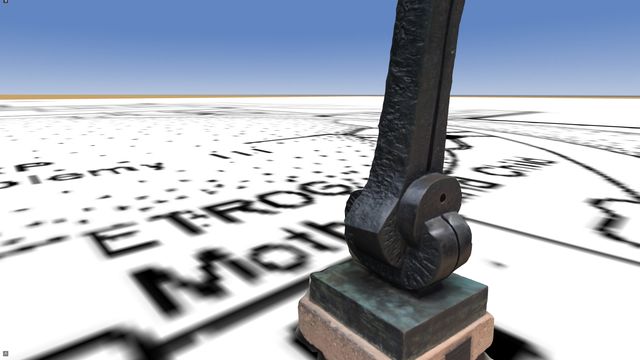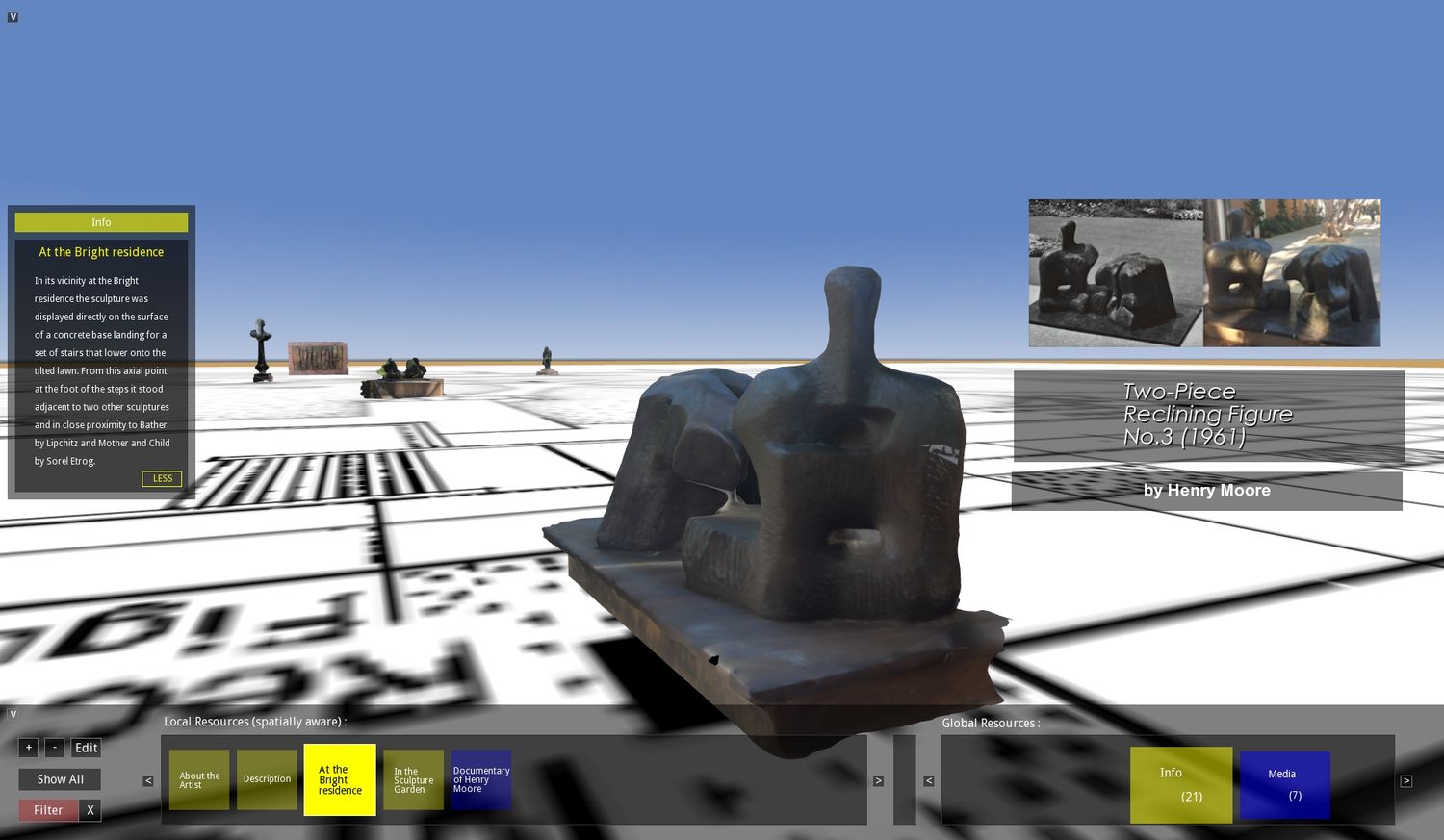
Digital Sculpture Platform
In the Winter and Spring quarters of 2015, the Hammer Museum partnered with UCLA’s Digital Humanities Program to offer a course about the Franklin D. Murphy Sculpture Garden. The course, taught by the Hammer’s Project Manager for Digital Initiatives Philip Leers, tasked students with researching the history and import of the Sculpture Garden and creating digital platforms to communicate that research. We asked the students to write blog posts describing their final projects and are proud to present the results of their hard work.
Sculpture is compelling in its ability to animate the space it inhabits. In today's urban landscape, sculpture installation conveys public art's organic role in the evolving relationship between society and public space. From the confines of the artist's studio to the private dwellings of the wealthy and well connected art collector, and finally to the open public plaza; the recontextualization of sculpture changes how we interpret and make meaning around these works, as they become subject to new audiences and surroundings.
The Franklin D. Murphy Sculpture Garden at UCLA is a public encyclopedia quietly pulsing within its man-made boundaries at the northeastern corner of the university campus. It acts as a casual stage for students, faculty and the general public who frequent the garden to eat lunch on rolling hills, linger in sculpted pods, or nap under the shade of David Smith's abstract, stainless steel Cubi XX (1964). The collection, comprised of 72 sculptures, sprawls over five acres in a manner that renders a natural dialogue between art, nature, and the university community. Although it appears timeless, the garden's collection of sculptures came together over many years, with contributions from many different sources. The donation of 12 sculptures to the university at the bequest of art trustees David and Dolly Bright in 1967 provided the core for the Sculpture Garden early on. Their foundational gift, which includes renowned works by artists Henry Moore and Jacques Lipchitz, offers an intriguing case study to examine the movement and re-contextualization of sculpture from private to public space.

Screenshot of the Digital Sculpture Platform, Alex Gonzalez, 2015.
The Digital Sculpture Platform is my concept for a sustainable online platform that provides a virtual experience of the Franklin D. Murphy Sculpture Garden. The project aims to host a digital environment adorned with 3D reconstructions of the 12 sculptures contributed by the Brights. I will augment the 3D reconstructions with primary research resources, including photographs of the sculptures installed at the Bright's private residence prior to their installation in the Sculpture Garden, to compare with their current setting and capture the intriguing narratives embedded within each piece. The digital space offers a third angle from which to evaluate the re-contextualization of sculpture, from private space to public space and now to virtual space, where users are able to interact with the Sculpture Garden without ever stepping foot in it. Although my project attempts to change how we view sculpture within the context of physical space, my goal is not to develop a virtual museum platform as a substitute for the traditional experience. Instead, I hope the Digital Sculpture Platform will expand on the physical experience in a way that provides new methods for conservation, access, interaction and research.




